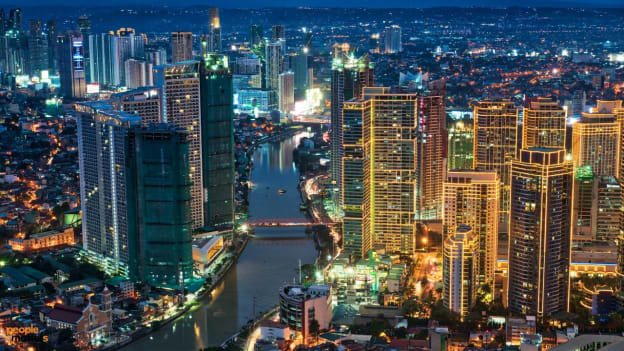PH economy grows 5.7% but challenges remain

The Philippines continues to demonstrate robust growth – expanding in the first quarter and positioning it as one of the fastest-rising economies in the ASEAN region, the latest data from the Philippine Statistics Authority showed.
However, challenges such as elevated borrowing costs and ongoing inflation are beginning to have an impact.
The gross domestic product grew by 5.7% throughout January to March compared to the same period last year. This growth rate represents an increase from the previous quarter’s 5.5% growth rate, yet it falls short of the 5.9% forecasted by a Bloomberg survey.
A similar poll by Reuters predicted a 5.9% GDP growth rate in the first three months of the year.
On a quarter-over-quarter basis, the Philippine economy exceeded expectations and indicated a continued upward trajectory despite external pressures.
This performance underscores the resilience of the Philippine economy amid global economic uncertainties. However, the slight lag behind projections highlights the potential risks that high interest rates and inflation pose to economic momentum.
A slowdown in consumer spending
There are increasing indications that the high interest rates – the highest in 17 years – and sustained inflation are beginning to affect domestic economic activities. Notably, consumer spending, which constitutes over 70% of the Philippine economy, grew by only 4.6% last quarter, marking the slowest increase since the pandemic.
This slowdown in consumer spending growth suggests that the high cost of borrowing and persistent price increases are dampening consumer confidence and spending ability. Such conditions can slow down economic momentum since reduced consumer spending may lead to lower business revenues and, potentially, cutbacks in investment and employment.
Balancing growth, controlling inflation
The economic situation, as indicated by last quarter’s GDP growth, is likely to influence the monetary policy decisions of the Bangko Sentral ng Pilipinas.
The central bank, which has previously implemented significant monetary tightening measures – the most aggressive in the last twenty years – to control inflation, may now consider maintaining the key interest rate at 6.5%.
Maintaining the current interest rate could be a strategic decision to stabilise the economy and avoid further dampening consumer spending and business investment. By keeping rates steady, the BSP aims to balance controlling inflation without excessively hindering economic growth, thereby safeguarding the economic gains achieved post-pandemic.
This approach underscores the delicate balance central banks must manage between stimulating economic activity and controlling inflation in a volatile global economic environment.
“With hard work and the right policies in place, we are confident that we will achieve our growth target of 6% to 7% this year,” said Arsenio Balisacan, secretary of the National Economic and Development Authority.
















